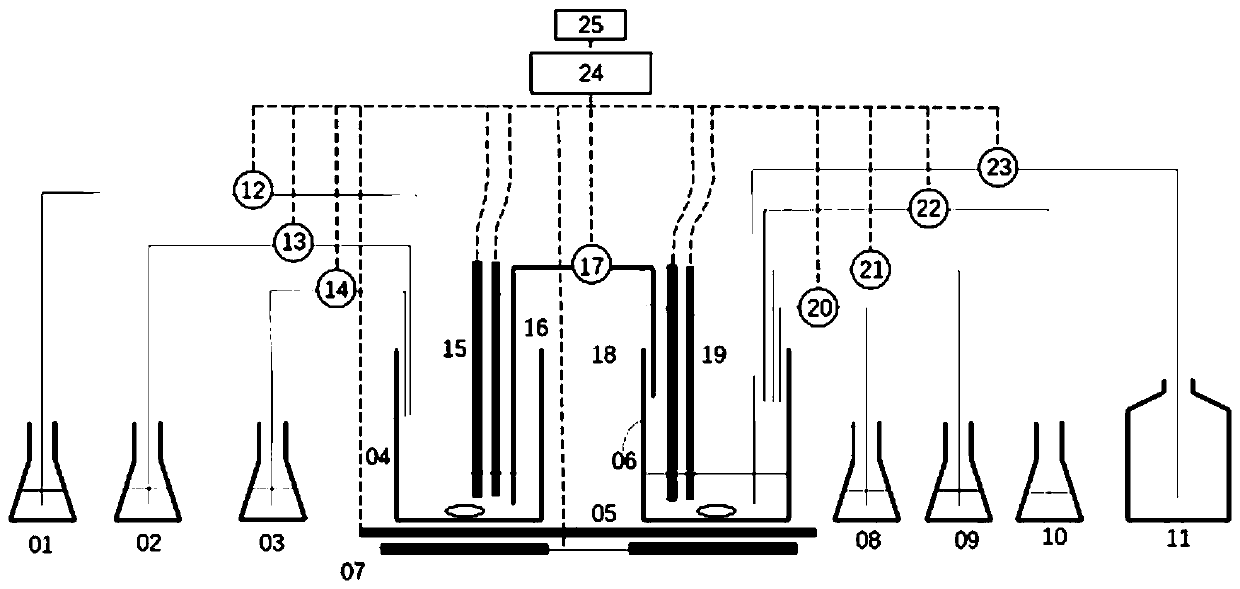Food allergen dynamic digestion model and in-vitro simulation evaluation method
An in vitro simulation and food allergy technology, applied in biological testing, material inspection products, measuring devices, etc., can solve the cumbersome and complicated process, cannot truly and effectively evaluate the sensitization of food allergens, and cannot completely replace human mast cell lines and other issues to achieve the effect of reducing the ratio of equipment to space stations
- Summary
- Abstract
- Description
- Claims
- Application Information
AI Technical Summary
Problems solved by technology
Method used
Image
Examples
Embodiment 1
[0047] Example 1: In vitro simulated dynamic digestion experiment of allergens
[0048] (1) Feed liquid filling: configure the simulated digestive liquid, acid-base adjustment reagents (HCl, NaHCO3) and bile salt solution required in the gastrointestinal digestion process, and store the digestive liquid in a 4° refrigerator before use to protect enzyme activity;
[0049] (2) Software opening and preheating: turn on the power and the instrument enters initialization, confirm that the stepping motor pump, pH sensor, temperature sensor, and constant temperature heating plate (electromagnetic heating plate) are connected normally, click the "Settings" button on the main page, and select "Temperature Control" mode, set the temperature of the heating plate, put the sample to be digested and the simulated gastrointestinal reaction chamber on the temperature-controlled heating plate to preheat for 10 minutes.
[0050] (3) pH Calibration: Click the "Settings" button on the main page to...
Embodiment 2
[0055] Embodiment 2: SDS-polyacrylamide gel experiment
[0056] Simulated gastric digestion products (0, 1, 2, 5, 10, 20, 30, 60, 90) and simulated duodenal intestinal digestion products (0, 1, 5, 10, 15, 30, 60, 90, 120), the structural changes and digestion stability of allergen samples during dynamic digestion in vitro were determined by SDS-polyacrylamide gel experiments.
Embodiment 3
[0057] Example 3: Evaluation of allergen digestion product IgG / IgE binding ability in vitro
[0058] The change of IgG / IgE binding capacity of allergen digestion products during dynamic digestion was analyzed by western blot (Westen-blot). The simulated gastric and duodenal digestion products at each time point were combined with rabbit polyclonal antibody (IgG) or serum antibody (IgE) of patients with shrimp allergy after inactivation treatment for experimental analysis.
PUM
 Login to View More
Login to View More Abstract
Description
Claims
Application Information
 Login to View More
Login to View More - R&D
- Intellectual Property
- Life Sciences
- Materials
- Tech Scout
- Unparalleled Data Quality
- Higher Quality Content
- 60% Fewer Hallucinations
Browse by: Latest US Patents, China's latest patents, Technical Efficacy Thesaurus, Application Domain, Technology Topic, Popular Technical Reports.
© 2025 PatSnap. All rights reserved.Legal|Privacy policy|Modern Slavery Act Transparency Statement|Sitemap|About US| Contact US: help@patsnap.com



